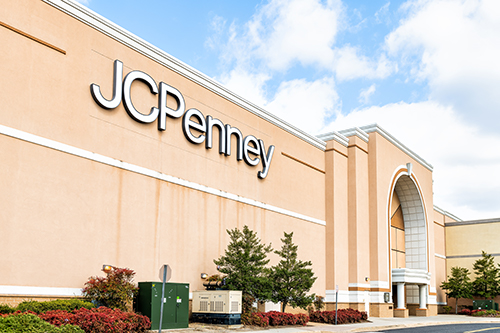Zombie Companies – A problem before COVID-19, and an even larger one after
While the Coronavirus pandemic caused the first recession in 11 years in the United States, the nature of the correction and policy responses have limited short-term economic damage. These policy responses have left several issues from the prior cycle intact. Perhaps one of the most significant problems is the proliferation of “zombie companies.” A zombie company is a business whose operating income is less than the interest owed on their debt. Relaxed credit conditions created by the Federal Reserve after the 2008/2009 financial crisis created the ideal conditions for these companies, and current policies will allow their numbers to grow. While keeping these firms in business may be desirable in the short run, they will become an increasingly significant drag on the economy going forward.
Years of ultralow interest rates meant to help the economy recover from the Global Financial Crisis helped fuel the rise of “living dead” companies. According to Deutsche Bank, the number of zombie companies now stands at nearly 20% of all companies in the United States[1]. These companies can stay in business by borrowing from banks and bond investors and hoping revenue will grow enough to allow them to cover their debt in the future. Banks and bondholders allow this as they do not have to realize a loss and go through a drawn-out bankruptcy process. In most cases, a zombie company is unable to grow its revenues and ends up in bankruptcy. During that time, a company is unable to reinvest in its business, becoming increasingly uncompetitive.
An example of a zombie company that was recently in the news is JC Penney. Already struggling due to the rise of online shopping, and competition from more nimble discount chains, the company’s high debt load limited their ability to reinvest in the business and attract new customers. The only option was for JC Penney to close stores slowly and hope that sales would stabilize and grow. When nearly all stores were closed due to COVID-19, the company was unable to make any interest payments on its debt. This type of experience is typical for zombie companies, years of slow decline culminating in a bankruptcy.
This long march towards bankruptcy is one of the biggest problems of zombie companies and why they negatively impact the economy. Research has shown that these companies drag on productivity growth[2] because they tie up resources (money, land, employees) in unproductive areas. These wasted resources prevent the economy from reaching full potential. It is as if horsewhip manufacturers stayed in business after the last carriage sold. All the while, the employees and factory could be have been building cars.
Preventing a massive wave of bankruptcies is useful in the short-term. If these firms went out of business, we would have even higher unemployment and lower consumer confidence leading to a deeper and longer recession or even an economic depression. Keeping these companies alive allows workers to continue to collect a paycheck while retraining for new jobs. Despite these positives, there has to be a reckoning for these companies, and there are several steps that might smooth the process. Changes to the bankruptcy code would allow companies to restructure their debts more quickly, and operate from a healthier position. Or bank regulators might need to pressure banks to reassess their loans and cut off funding for these companies. Left unaddressed for too long, though, zombie companies could lead to a corporate default crisis and cause significant damage to the US economy.
[1] https://oecdecoscope.blog/2017/12/06/zombie-firms-and-weak-productivity-what-role-for-policy/
[2] https://www.washingtonpost.com/business/2020/06/23/economy-debt-coronavirus-zombie-firms/
While the Coronavirus pandemic caused the first recession in 11 years in the United States, the nature of the correction and policy responses have limited short-term economic damage. These policy responses have left several issues from the prior cycle intact. Perhaps one of the most significant problems is the proliferation of “zombie companies.” A zombie company is a business whose operating income is less than the interest owed on their debt. Relaxed credit conditions created by the Federal Reserve after the 2008/2009 financial crisis created the ideal conditions for these companies, and current policies will allow their numbers to grow. While keeping these firms in business may be desirable in the short run, they will become an increasingly significant drag on the economy going forward.
Years of ultralow interest rates meant to help the economy recover from the Global Financial Crisis helped fuel the rise of “living dead” companies. According to Deutsche Bank, the number of zombie companies now stands at nearly 20% of all companies in the United States[1]. These companies can stay in business by borrowing from banks and bond investors and hoping revenue will grow enough to allow them to cover their debt in the future. Banks and bondholders allow this as they do not have to realize a loss and go through a drawn-out bankruptcy process. In most cases, a zombie company is unable to grow its revenues and ends up in bankruptcy. During that time, a company is unable to reinvest in its business, becoming increasingly uncompetitive.
An example of a zombie company that was recently in the news is JC Penney. Already struggling due to the rise of online shopping, and competition from more nimble discount chains, the company’s high debt load limited their ability to reinvest in the business and attract new customers. The only option was for JC Penney to close stores slowly and hope that sales would stabilize and grow. When nearly all stores were closed due to COVID-19, the company was unable to make any interest payments on its debt. This type of experience is typical for zombie companies, years of slow decline culminating in a bankruptcy.
This long march towards bankruptcy is one of the biggest problems of zombie companies and why they negatively impact the economy. Research has shown that these companies drag on productivity growth[2] because they tie up resources (money, land, employees) in unproductive areas. These wasted resources prevent the economy from reaching full potential. It is as if horsewhip manufacturers stayed in business after the last carriage sold. All the while, the employees and factory could be have been building cars.
Preventing a massive wave of bankruptcies is useful in the short-term. If these firms went out of business, we would have even higher unemployment and lower consumer confidence leading to a deeper and longer recession or even an economic depression. Keeping these companies alive allows workers to continue to collect a paycheck while retraining for new jobs. Despite these positives, there has to be a reckoning for these companies, and there are several steps that might smooth the process. Changes to the bankruptcy code would allow companies to restructure their debts more quickly, and operate from a healthier position. Or bank regulators might need to pressure banks to reassess their loans and cut off funding for these companies. Left unaddressed for too long, though, zombie companies could lead to a corporate default crisis and cause significant damage to the US economy.
[1] https://oecdecoscope.blog/2017/12/06/zombie-firms-and-weak-productivity-what-role-for-policy/
[2] https://www.washingtonpost.com/business/2020/06/23/economy-debt-coronavirus-zombie-firms/

